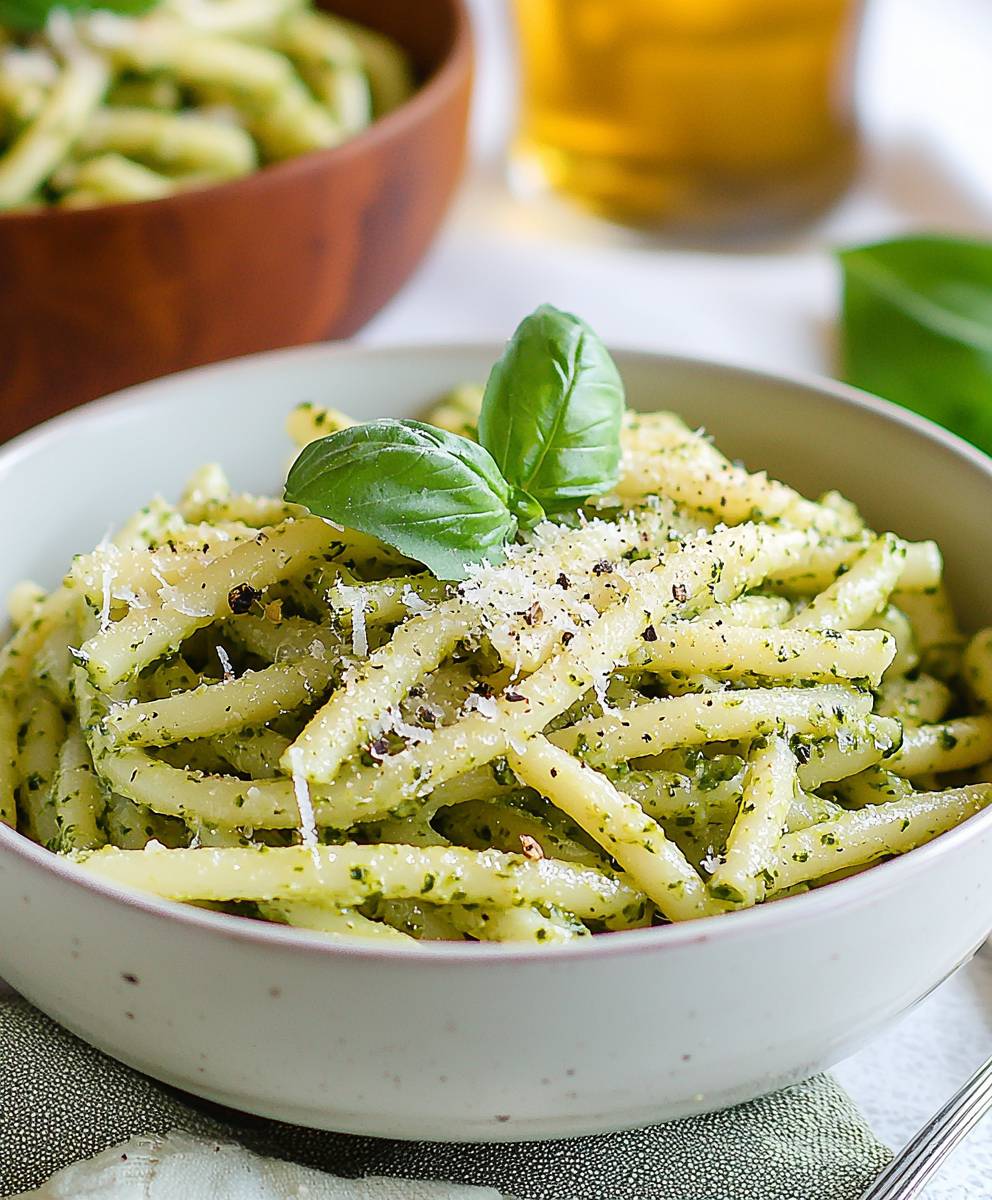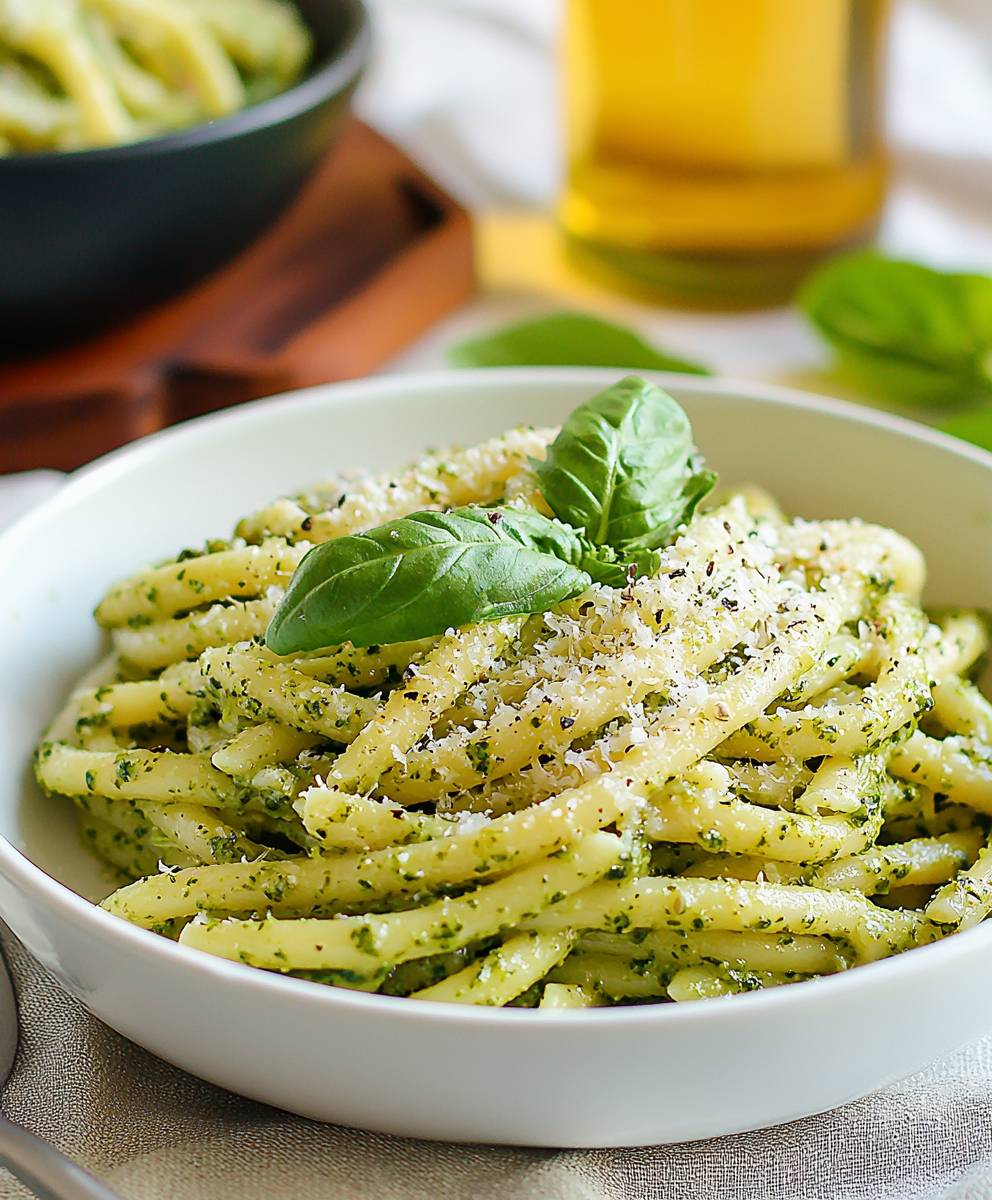Zucchini pesto pasta: Prepare to be amazed! This isn’t your average pesto pasta dish; it’s a vibrant celebration of summer flavors, transforming the humble zucchini into a creamy, dreamy sauce that will have you craving more. Forget heavy, oily pesto we’re lightening things up while maximizing taste.
Pesto, traditionally hailing from Genoa, Italy, is a sauce steeped in history, typically made with basil, pine nuts, garlic, Parmesan cheese, and olive oil. But like all great culinary traditions, pesto has evolved, embracing new ingredients and techniques. Our zucchini pesto pasta is a testament to this evolution, offering a fresh, seasonal twist on a beloved classic.
What makes this dish so irresistible? It’s the perfect balance of creamy texture, bright, herbaceous flavors, and the subtle sweetness of zucchini. Its incredibly easy to make, requiring minimal cooking time, making it ideal for busy weeknights. Plus, it’s a fantastic way to sneak in extra vegetables, making it a winner for both kids and adults alike. Get ready to experience pesto in a whole new light!
Ingredients:
- 1 pound pasta (spaghetti, linguine, or your favorite shape)
- 2 medium zucchini, about 1 pound total, ends trimmed
- 1/4 cup olive oil, plus more for drizzling
- 4 cloves garlic, minced
- 1/4 cup pine nuts, toasted
- 1/2 cup fresh basil leaves, packed
- 1/4 cup grated Parmesan cheese, plus more for serving
- 2 tablespoons lemon juice
- Salt and freshly ground black pepper to taste
- 1/4 cup reserved pasta water
- Optional: Red pepper flakes for a touch of heat
Preparing the Zucchini Pesto:
Okay, let’s get started on the heart of this dish the zucchini pesto! Don’t worry, it’s super easy and comes together in a flash. The key is to get the zucchini cooked just right so it blends into a creamy, dreamy sauce.
- Sauté the Zucchini and Garlic: First, slice the zucchini into thin rounds, about 1/4 inch thick. Heat the 1/4 cup of olive oil in a large skillet over medium heat. Add the minced garlic and cook for about 30 seconds, until fragrant. Be careful not to burn the garlic! Add the zucchini slices to the skillet and cook, stirring occasionally, until they are tender and slightly browned, about 8-10 minutes. You want them to be soft enough to blend easily. If they start to stick, add a tablespoon or two of water to the pan.
- Toast the Pine Nuts: While the zucchini is cooking, toast the pine nuts. You can do this in a dry skillet over medium-low heat, stirring constantly, until they are golden brown and fragrant, about 3-5 minutes. Watch them carefully, as they burn easily! Alternatively, you can toast them in the oven at 350°F (175°C) for about 5-7 minutes. Once toasted, set them aside to cool slightly.
- Combine Ingredients in a Food Processor: Once the zucchini is cooked, transfer it to a food processor. Add the toasted pine nuts, fresh basil leaves, grated Parmesan cheese, and lemon juice. Season with salt and freshly ground black pepper to taste.
- Blend Until Smooth: Pulse the food processor a few times to start breaking down the ingredients. Then, process continuously until the mixture is smooth and creamy. You may need to scrape down the sides of the food processor a few times to ensure everything is evenly blended. If the pesto is too thick, add a tablespoon or two of olive oil or water to thin it out. Taste and adjust the seasoning as needed. I usually add a little extra lemon juice for brightness!
Cooking the Pasta:
While the pesto is coming together, let’s get the pasta cooking. This is pretty straightforward, but there are a few tricks to ensure perfectly cooked pasta every time.
- Boil Water: Bring a large pot of salted water to a rolling boil. The water should be generously salted it should taste like the sea! This seasons the pasta from the inside out.
- Cook the Pasta: Add the pasta to the boiling water and cook according to the package directions, until al dente. Al dente means “to the tooth” in Italian the pasta should be firm to the bite, not mushy.
- Reserve Pasta Water: Before draining the pasta, reserve about 1/4 cup of the pasta water. This starchy water is liquid gold! It will help to create a creamy sauce and bind the pesto to the pasta.
- Drain the Pasta: Drain the pasta in a colander. Don’t rinse it! Rinsing removes the starch that helps the sauce cling to the pasta.
Combining Pasta and Pesto:
Now for the best part bringing it all together! This is where the magic happens, and you’ll see how the zucchini pesto transforms into a delicious and satisfying meal.
- Combine Pasta and Pesto: Return the drained pasta to the pot. Add the zucchini pesto and toss to coat. If the sauce is too thick, add a tablespoon or two of the reserved pasta water at a time, until the sauce reaches your desired consistency. The pasta water will help to emulsify the sauce and create a creamy texture.
- Adjust Seasoning: Taste the pasta and adjust the seasoning as needed. You may need to add more salt, pepper, or lemon juice to balance the flavors.
- Serve Immediately: Serve the zucchini pesto pasta immediately. Garnish with extra grated Parmesan cheese, a drizzle of olive oil, and a sprinkle of red pepper flakes, if desired.
Tips and Variations:
This zucchini pesto pasta is delicious as is, but here are a few ideas to customize it to your liking:
- Add Protein: Grilled chicken, shrimp, or chickpeas would be a great addition to this dish.
- Add Vegetables: Roasted cherry tomatoes, bell peppers, or spinach would add extra flavor and nutrients.
- Use Different Nuts: If you don’t have pine nuts, you can use walnuts, almonds, or even sunflower seeds.
- Make it Vegan: Substitute nutritional yeast for the Parmesan cheese to make this dish vegan.
- Spice it Up: Add a pinch of red pepper flakes to the pesto for a little heat.
- Lemon Zest: Add lemon zest to the pesto for a brighter, more intense lemon flavor.
- Garlic Lovers: If you love garlic, add an extra clove or two to the pesto.
- Herbs: Experiment with different herbs, such as mint or parsley, in addition to basil.
Storing Leftovers:
Leftover zucchini pesto pasta can be stored in an airtight container in the refrigerator for up to 3 days. Reheat gently in a skillet or microwave. You may need to add a little water or olive oil to loosen the sauce. The pesto may darken slightly over time, but it will still taste delicious.
Make Ahead Tips:
You can make the zucchini pesto ahead of time and store it in the refrigerator for up to 3 days. Bring it to room temperature before using. You can also cook the pasta ahead of time and toss it with a little olive oil to prevent it from sticking together. Store the pasta in the refrigerator and reheat it before adding the pesto.
Choosing the Right Pasta:
While spaghetti or linguine are classic choices for pesto pasta, feel free to experiment with other shapes. Penne, fusilli, or rotini would also work well. The key is to choose a pasta shape that has ridges or grooves to help the sauce cling to it.
Why Toasting Pine Nuts Matters:
Toasting pine nuts is a crucial step in making pesto. Toasting brings out their nutty flavor and enhances their texture. Raw pine nuts can taste a bit bland and have a slightly oily texture. Toasting them transforms them into a flavorful and crunchy addition to the pesto.
The Importance of Fresh Basil:
Fresh basil is essential for making authentic pesto. Dried basil simply doesn’t have the same vibrant flavor and aroma. Look for basil with bright green leaves and a strong, sweet scent. Store fresh basil in a glass of water, like you would flowers, to keep it fresh for longer.
Parmesan Cheese: The Real Deal
Using high-quality Parmesan cheese makes a big difference in the flavor of the pesto. Look for Parmigiano-Reggiano, which is aged for at least 12 months and has a rich, complex flavor. Avoid pre-grated Parmesan cheese, as it often contains cellulose and other additives that can affect the texture and flavor of the pesto. Grate the Parmesan cheese fresh just before using it.
Lemon Juice: Brightening the Flavors
Lemon juice adds a bright, acidic note to the pesto that balances the richness of the cheese and oil. It also helps to prevent the basil from oxidizing and turning brown. Use fresh lemon juice for the best flavor. Bottled lemon juice can taste artificial and lack the same vibrancy.
Salt and Pepper: Seasoning to Perfection
Salt and pepper are essential for seasoning the pesto to perfection. Start with a small amount and then taste and adjust as needed. Remember that the Parmesan cheese is already salty, so you may not need to add much salt. Freshly ground black pepper adds a nice depth of flavor.
Olive Oil: The Foundation of Pesto
Use a good-quality extra virgin olive oil for the pesto. The olive oil should have a fruity, slightly peppery flavor. Avoid using cheap, bland olive oil, as it will affect the overall flavor of the pesto.
The Food Processor

Conclusion:
This Zucchini Pesto Pasta isn’t just another pasta dish; it’s a vibrant celebration of fresh flavors and simple ingredients that comes together in a flash. Seriously, from start to finish, you’re looking at a meal that’s ready faster than you can say “delicious!” The creamy, bright pesto, made with the often-overlooked zucchini, offers a delightful twist on the traditional basil version, making it lighter, more refreshing, and perfect for any time of year. But beyond the speed and ease, it’s the taste that truly makes this recipe a must-try. The subtle sweetness of the zucchini, combined with the nutty Parmesan, garlic, and a hint of lemon, creates a symphony of flavors that will have you reaching for seconds (and maybe even thirds!).
I know what you might be thinking: zucchini in pesto? Trust me on this one. It’s a game-changer! The zucchini adds a wonderful creaminess and body to the pesto without overpowering the other flavors. Plus, it’s a fantastic way to sneak in some extra veggies, especially if you have picky eaters in the house. They’ll be too busy enjoying the deliciousness to even notice!
And the best part? This recipe is incredibly versatile. Feel free to experiment with different variations to suit your taste. For a heartier meal, try adding grilled chicken, shrimp, or sausage. A sprinkle of toasted pine nuts or walnuts adds a delightful crunch. If you’re feeling adventurous, toss in some sun-dried tomatoes or roasted red peppers for an extra burst of flavor. For a vegan option, simply substitute the Parmesan cheese with nutritional yeast or a plant-based Parmesan alternative. You can also use different types of pasta, like whole wheat, gluten-free, or even zucchini noodles for a low-carb option.
Serving suggestions? This Zucchini Pesto Pasta is fantastic on its own as a light lunch or dinner. It also pairs beautifully with a simple side salad or some crusty bread for dipping. For a more elegant presentation, garnish with a sprinkle of fresh basil, a drizzle of olive oil, and a grating of Parmesan cheese. It’s also a great dish to bring to potlucks or picnics, as it’s easy to transport and can be served hot or cold.
I’m absolutely confident that you’re going to love this recipe as much as I do. It’s quick, easy, delicious, and packed with flavor. It’s the perfect weeknight meal, a crowd-pleasing party dish, or a simple way to enjoy the bounty of summer.
So, what are you waiting for? Head to your kitchen, gather your ingredients, and get ready to whip up a batch of this amazing Zucchini Pesto Pasta. I can’t wait to hear what you think! Once you’ve tried it, please come back and leave a comment below. Let me know what variations you tried, what you loved about it, and any tips or tricks you discovered along the way. Sharing your experience will not only help other readers but will also inspire me to create even more delicious recipes for you to enjoy. Happy cooking!
Zucchini Pesto Pasta: A Delicious & Easy Recipe
Creamy and vibrant Zucchini Pesto Pasta! This quick and easy dish features a delicious pesto made from zucchini, basil, pine nuts, and Parmesan cheese, tossed with your favorite pasta. A perfect weeknight meal!
Ingredients
- 1 pound pasta (spaghetti, linguine, or your favorite shape)
- 2 medium zucchini, about 1 pound total, ends trimmed
- 1/4 cup olive oil, plus more for drizzling
- 4 cloves garlic, minced
- 1/4 cup pine nuts, toasted
- 1/2 cup fresh basil leaves, packed
- 1/4 cup grated Parmesan cheese, plus more for serving
- 2 tablespoons lemon juice
- Salt and freshly ground black pepper to taste
- 1/4 cup reserved pasta water
- Optional: Red pepper flakes for a touch of heat
Instructions
- Sauté the Zucchini and Garlic: Slice the zucchini into thin rounds, about 1/4 inch thick. Heat the 1/4 cup of olive oil in a large skillet over medium heat. Add the minced garlic and cook for about 30 seconds, until fragrant. Add the zucchini slices to the skillet and cook, stirring occasionally, until they are tender and slightly browned, about 8-10 minutes. If they start to stick, add a tablespoon or two of water to the pan.
- Toast the Pine Nuts: Toast the pine nuts in a dry skillet over medium-low heat, stirring constantly, until they are golden brown and fragrant, about 3-5 minutes. Alternatively, toast them in the oven at 350°F (175°C) for about 5-7 minutes. Set aside to cool slightly.
- Combine Ingredients in a Food Processor: Transfer the cooked zucchini to a food processor. Add the toasted pine nuts, fresh basil leaves, grated Parmesan cheese, and lemon juice. Season with salt and freshly ground black pepper to taste.
- Blend Until Smooth: Pulse the food processor a few times to start breaking down the ingredients. Then, process continuously until the mixture is smooth and creamy. Scrape down the sides as needed. If the pesto is too thick, add a tablespoon or two of olive oil or water to thin it out. Taste and adjust the seasoning.
- Boil Water: Bring a large pot of salted water to a rolling boil.
- Cook the Pasta: Add the pasta to the boiling water and cook according to the package directions, until al dente.
- Reserve Pasta Water: Before draining the pasta, reserve about 1/4 cup of the pasta water.
- Drain the Pasta: Drain the pasta in a colander.
- Combine Pasta and Pesto: Return the drained pasta to the pot. Add the zucchini pesto and toss to coat. If the sauce is too thick, add a tablespoon or two of the reserved pasta water at a time, until the sauce reaches your desired consistency.
- Adjust Seasoning: Taste the pasta and adjust the seasoning as needed.
- Serve Immediately: Serve the zucchini pesto pasta immediately. Garnish with extra grated Parmesan cheese, a drizzle of olive oil, and a sprinkle of red pepper flakes, if desired.
Notes
- Add Protein: Grilled chicken, shrimp, or chickpeas would be a great addition to this dish.
- Add Vegetables: Roasted cherry tomatoes, bell peppers, or spinach would add extra flavor and nutrients.
- Use Different Nuts: If you don’t have pine nuts, you can use walnuts, almonds, or even sunflower seeds.
- Make it Vegan: Substitute nutritional yeast for the Parmesan cheese to make this dish vegan.
- Spice it Up: Add a pinch of red pepper flakes to the pesto for a little heat.
- Lemon Zest: Add lemon zest to the pesto for a brighter, more intense lemon flavor.
- Garlic Lovers: If you love garlic, add an extra clove or two to the pesto.
- Herbs: Experiment with different herbs, such as mint or parsley, in addition to basil.
- Storing Leftovers: Leftover zucchini pesto pasta can be stored in an airtight container in the refrigerator for up to 3 days. Reheat gently in a skillet or microwave. You may need to add a little water or olive oil to loosen the sauce. The pesto may darken slightly over time, but it will still taste delicious.
- Make Ahead Tips: You can make the zucchini pesto ahead of time and store it in the refrigerator for up to 3 days. Bring it to room temperature before using. You can also cook the pasta ahead of time and toss it with a little olive oil to prevent it from sticking together. Store the pasta in the refrigerator and reheat it before adding the pesto.
- Choosing the Right Pasta: While spaghetti or linguine are classic choices for pesto pasta, feel free to experiment with other shapes. Penne, fusilli, or rotini would also work well. The key is to choose a pasta shape that has ridges or grooves to help the sauce cling to it.
- Why Toasting Pine Nuts Matters: Toasting pine nuts is a crucial step in making pesto. Toasting brings out their nutty flavor and enhances their texture. Raw pine nuts can taste a bit bland and have a slightly oily texture. Toasting them transforms them into a flavorful and crunchy addition to the pesto.
- The Importance of Fresh Basil: Fresh basil is essential for making authentic pesto. Dried basil simply doesn’t have the same vibrant flavor and aroma. Look for basil with bright green leaves and a strong, sweet scent. Store fresh basil in a glass of water, like you would flowers, to keep it fresh for longer.
- Parmesan Cheese: The Real Deal: Using high-quality Parmesan cheese makes a big difference in the flavor of the pesto. Look for Parmigiano-Reggiano, which is aged for at least 12 months and has a rich, complex flavor. Avoid pre-grated Parmesan cheese, as it often contains cellulose and other additives that can affect the texture and flavor of the pesto. Grate the Parmesan cheese fresh just before using it.
- Lemon Juice: Brightening the Flavors: Lemon juice adds a bright, acidic note to the pesto that balances the richness of the cheese and oil. It also helps to prevent the basil from oxidizing and turning brown. Use fresh lemon juice for the best flavor. Bottled lemon juice can taste artificial and lack the same vibrancy.
- Salt and Pepper: Seasoning to Perfection: Salt and pepper are essential for seasoning the pesto to perfection. Start with a small amount and then taste and adjust as needed. Remember that the Parmesan cheese is already salty, so you may not need to add much salt. Freshly ground black pepper adds a nice depth of flavor.
- Olive Oil: The Foundation of Pesto: Use a good-quality extra virgin olive oil for the pesto. The olive oil should have a fruity, slightly peppery flavor. Avoid using cheap, bland olive oil, as it will affect the overall flavor of the pesto.





Leave a Comment